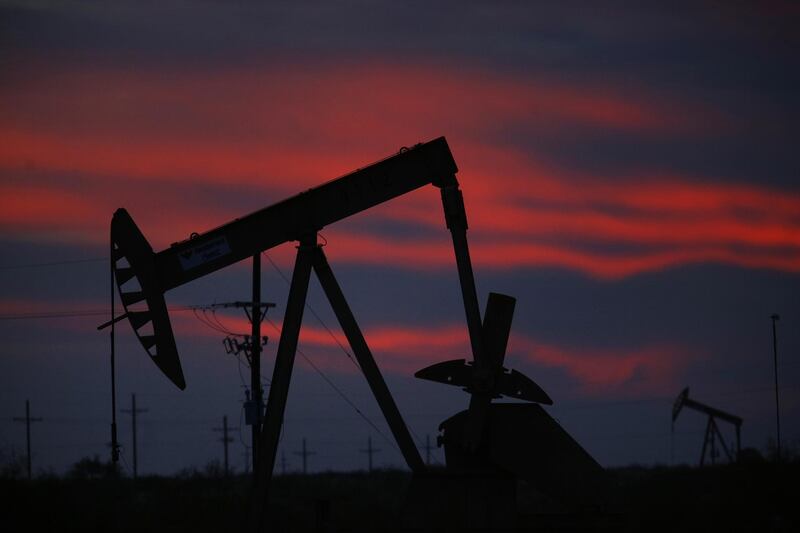The US midterm elections produced mixed results for the oil industry, but are unlikely to significantly slow output growth from key producing states.
The Democrats' return to power in the US House of Representatives, where they gained at least 35 seats last Tuesday, is expected to lead to increased scrutiny of President Donald Trump's "deregulatory" energy agenda.
The transfer of power is expected to lead to a wave of House hearings on the Trump administration's efforts to expand offshore drilling and other federal efforts aimed at boosting domestic energy output.
Domestic output has already been given a boost, to a record 11.4 million barrels per day in August, according to the US Energy Information Administration. The agency expects output to hit 12 million bpd by April.
That increase has come primarily out of relatively lower cost, onshore unconventional production, under state jurisdictions.
Federal offshore production in the US Gulf of Mexico at 1.92 million bpd in August was up 650,000 bpd from a decade ago.
During the same period, production in Texas - home to the prolific Permian Basin - has risen 3.5 million bpd to 4.58 million bpd, while North Dakota production has climbed from 1.1 million bpd to 1.28 million bpd.
While onshore production is expected to keep rising, production in the Arabian Gulf is expected to peak early next decade, averaging just over 1.9 million bpd in 2020, before falling to about 1.83 million bpd in 2022, according to S&P Global Platts Analytics.
The Trump administration has been pushing to expand drilling into federal waters, particularly in untapped portions of the Norphlet Field in the eastern US Gulf, where a moratorium on drilling is in place until 2022.
Portions of the Norphlet is already being developed - Shell and Total announced large discoveries there this year. The eastern Gulf is said to hold between 2.55 billion and 3.19 billion barrels of unleased economically recoverable oil.
The Trump administration would like to open those reserves, but will likely be stymied as a Democrat-controlled House battle it out with a Republican-controlled Senate.
"Simply put, [the election’s] mixed result seems more likely to promote Congressional pugilism than cross-party policy cooperation," analysts with ClearView Energy Partners said in a note last week.
Offshore activity has also hit a roadblock at the state level, after Florida voters approved an amendment to prohibit offshore drilling. Florida's Amendment 9, which passed with 68 per cent of the vote, is a state constitutional amendment that required a 60 per cent super-majority vote for approval.
The amendment prohibits drilling in all state waters along Florida's shoreline, which includes submerged lands 10.36 statutory miles off Florida's west coast and three nautical miles off the east coast.
_______________
Read more:
[ Quicktake: Deciphering the energy industry's jargon ]
[ Trump is now in a position to consolidate his legacy on the domestic and foreign policy front ]
[ US president hails midterms 'a big victory' ]
[ What does outcome mean for the 2020 presidential election? ]
[ US Congress welcomes trailblazers as record number of women and minorities elected ]
[ Midterm results are the first steps to curtailing Trump's power ]
_______________
The amendment will have no immediate impact on supply since no drilling currently takes place in state waters, but it does prohibit future development.
Election results from key oil-producing states point the way to further onshore output growth.
While a Democrat expected to favour stricter drilling regulations won the governor's race in New Mexico, the no. 3 oil-producing state, Republicans won Senate races in Texas and North Dakota, the no. 1 and 2 oil-producing states, while Colorado voters rebuffed new limits on oil and gas drilling.
In North Dakota, US Representative Kevin Cramer, a Republican, defeated incumbent US Senator Heidi Heitkamp, a Democrat, after a Senate campaign in which both candidates worked to stress their oil- and natural gas-friendly credentials.
Republican Senator Ted Cruz, one of the oil industry's most vocal defenders, beat Democrat Beto O'Rourke, who wanted to boost federal funding for climate research, re-join the Paris Climate Agreement and supported stronger land-use policies in Texas.
In New Mexico, US Representative Michelle Lujan Grisham, a Democrat, won the race for governor. Lujan Grisham is seen as more likely to embrace drilling regulations, such as limits to methane emissions. But her reach is limited, given that a large share of the state's producing oil and natural gas leases are on federal land.
Nearly 57 per cent of Colorado voters defeated a 2,500-foot drilling setback that would have banned most new drilling in the DJ Basin, where prolific acreage has made the state the fifth top oil producer in the US.
Proposition 112 would have blocked new drilling on private land within 2,500 feet of homes or schools, compared with the current setback of 500 feet.
Platts Analytics had estimated the measure would have caused Colorado's oil production to sink to 275,000 bpd by end-2023, a 54 per cent decline from current projections.
Proponents of the proposition will likely make another attempt in the future, but will likely be met by a stiff, and well-funded, resistance.
Oil and gas interests spent more than $30 million to defeat the proposition, compared with $1 million by supporters of the measure.
Meghan Gordon is a senior writer and Brian Schied is a senior editor, S&P Global Platts oil team






